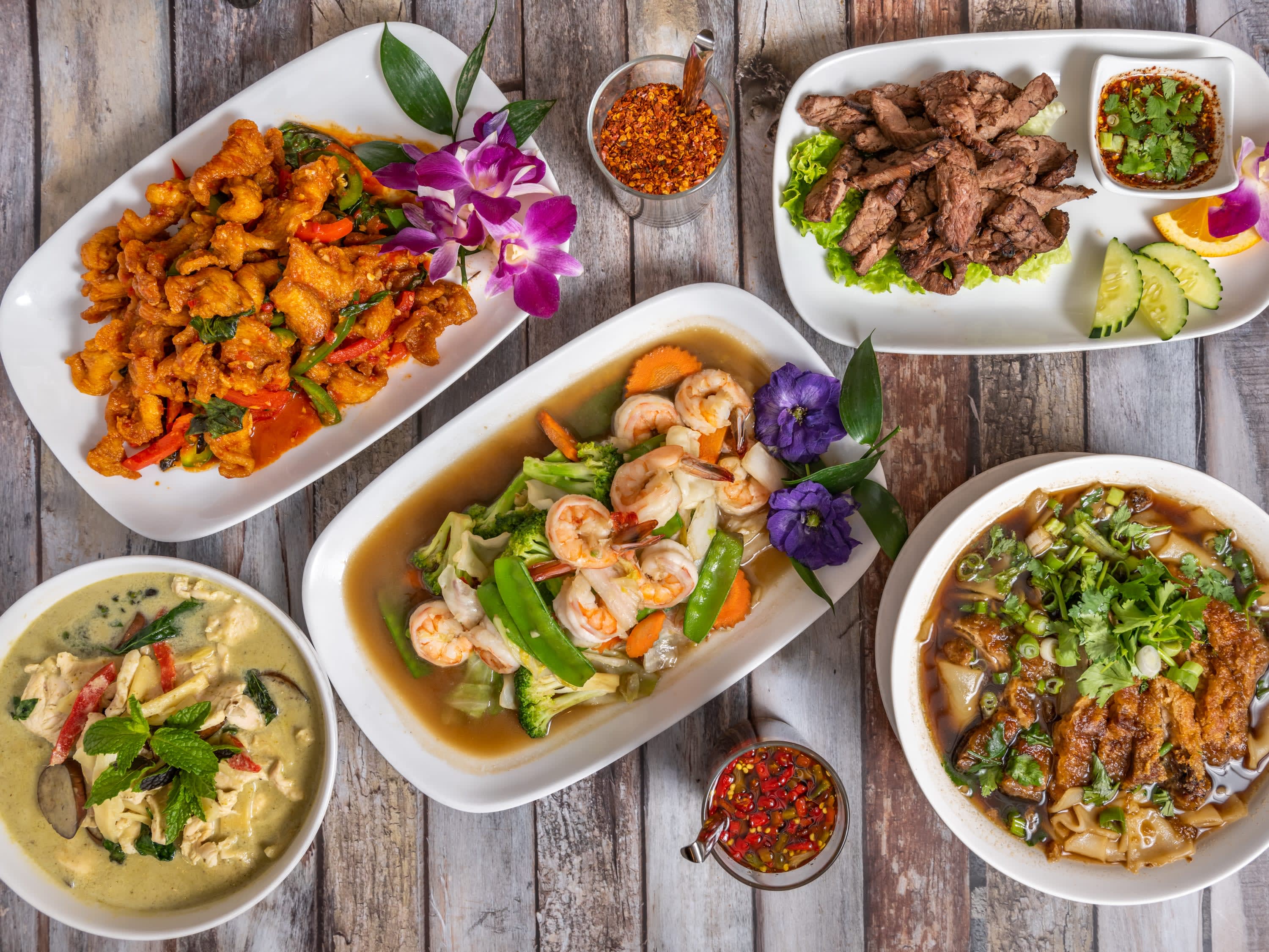How to Make Thai Green Curry with Coconut Milk
:max_bytes(150000):strip_icc()/vegetarian-thai-green-coconut-curry-3217757_step-08-9152a4b45b454c6b961cb18f7202bdfd.jpg)
Imagine walking through the bustling streets of Bangkok, where the aroma of Thai cuisine wafts through the air, tantalizing your senses. Among the many dishes that define Thai cooking, green curry stands out as a symphony of flavors. Today, we're going to bring that culinary magic into your kitchen with a step-by-step guide on how to make Thai green curry with coconut milk. Get ready to embark on a flavorful journey that will leave your taste buds dancing!
Introduction to Thai Green Curry
Thai green curry, or Gaeng Keow Wan, is a staple of Thai cuisine, known for its vibrant color and rich, creamy texture. The secret to its success lies in the harmonious blend of Thai ingredients, including fresh herbs, aromatic spices, and, of course, coconut milk. This dish is not only a delight to the palate but also a testament to the artistry of Thai cooking.
Ingredients: The Building Blocks of Your Curry
Before we dive into the recipe, let's gather our ingredients. You'll need:
- 1 can of coconut milk
- 2 tablespoons of green curry paste
- 1 pound of chicken breast, sliced
- 1 cup of Thai eggplant, quartered
- 1 red bell pepper, sliced
- 1 cup of bamboo shoots, sliced
- 1 tablespoon of fish sauce
- 1 tablespoon of palm sugar
- 4 kaffir lime leaves
- 1 stalk of lemongrass, bruised
- 1 cup of Thai basil leaves
- 1 red chili, sliced (optional)
Step-by-Step Guide: How to Make Thai Green Curry with Coconut Milk
Preparing the Coconut Milk
The coconut milk is the foundation of your curry, providing a creamy base that ties all the flavors together. Start by opening a can of coconut milk and separating the thick cream from the liquid. This step is crucial for achieving the right consistency.
Cooking the Curry Paste
In a large pan, heat the coconut cream over medium heat. Once it starts to bubble, add the green curry paste. Stir continuously for about 2-3 minutes until the paste is well incorporated and the aroma fills your kitchen. This step is akin to creating a flavorful canvas on which you'll paint the rest of your dish.
Adding the Protein
Next, add the sliced chicken breast to the pan. Cook until the chicken is no longer pink, stirring occasionally to ensure it's evenly coated in the curry paste. This step infuses the chicken with the rich flavors of the paste, creating a delicious base for your curry.
Incorporating the Vegetables
Now it's time to add the vegetables. Start with the Thai eggplant, red bell pepper, and bamboo shoots. Cook for about 5 minutes, allowing the vegetables to soften and absorb the flavors. The vibrant colors of the vegetables will add a visual appeal to your dish, making it as pleasing to the eye as it is to the palate.
Seasoning the Curry
Season your curry with fish sauce and palm sugar. These ingredients add a balance of salty and sweet flavors, enhancing the overall taste of the dish. Stir well to ensure the seasonings are evenly distributed.
Adding the Aromatics
Next, add the kaffir lime leaves and bruised lemongrass. These aromatics will infuse your curry with a citrusy, fragrant note that is characteristic of Thai cuisine. Allow the curry to simmer for about 10 minutes, letting the flavors meld together.
Finishing Touches
Finally, add the Thai basil leaves and sliced red chili (if using). These ingredients add a fresh, herbaceous note and a touch of heat, respectively. Stir gently and remove the pan from the heat. Your Thai green curry is now ready to be served!
Thai Cooking Tips: Mastering the Art
Cooking Thai cuisine is an art form that requires a delicate balance of flavors. Here are some tips to help you master the art:
- Fresh Ingredients: Always use fresh herbs and spices. The vibrancy of Thai cuisine comes from the freshness of its ingredients.
- Balance of Flavors: Aim for a balance of sweet, salty, sour, and spicy flavors. This harmony is what makes Thai food so irresistible.
- Coconut Milk: Use full-fat coconut milk for a richer, creamier curry. The fat content helps to carry the flavors more effectively.
Conclusion: A Culinary Adventure Awaits
Congratulations! You've just learned how to make Thai green curry with coconut milk. This dish is not just a meal; it's a culinary adventure that transports you to the heart of Thailand. From the creamy coconut milk to the aromatic curry paste, every element of this dish tells a story of tradition and flavor.
So, why not invite some friends over and share this culinary masterpiece? After all, food is best enjoyed in good company. Happy cooking!
FAQs
Can I use light coconut milk instead of full-fat?
- While you can use light coconut milk, it won't provide the same richness and creaminess as full-fat coconut milk. For the best results, stick with full-fat.
What can I substitute for Thai eggplant?
- If you can't find Thai eggplant, you can use regular eggplant or even zucchini. The texture will be slightly different, but the flavors will still be delicious.
How can I make my curry less spicy?
- To reduce the spiciness, use less green curry paste or omit the sliced red chili. You can also add more coconut milk to dilute the heat.
Can I make this recipe vegetarian?
- Absolutely! Simply replace the chicken with tofu or additional vegetables. You can also use vegetable broth instead of fish sauce to keep it vegetarian-friendly.
How long can I store leftover green curry?
- Leftover green curry can be stored in the refrigerator for up to 3 days. You can also freeze it for up to 3 months. Just make sure to thaw it properly before reheating.


0 Response to "How to Make Thai Green Curry with Coconut Milk"
Post a Comment